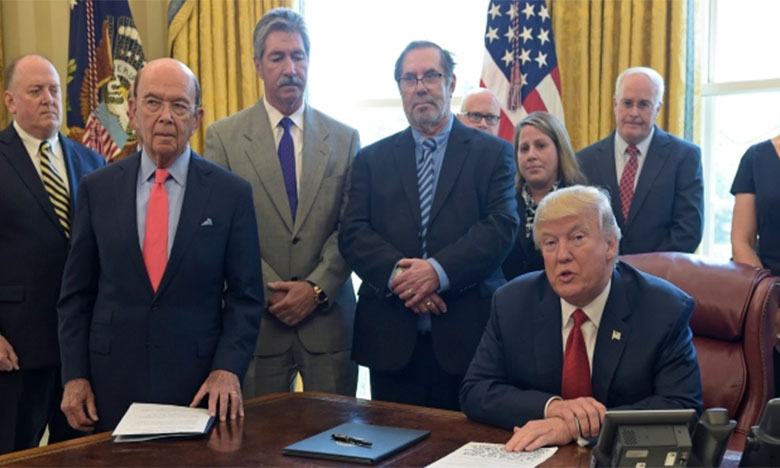U.S. Commerce Secretary Wilbur Ross stood beside Donald Trump as the U.S. president called Canada's actions against American trade interests "a disgrace."
"That also includes what's happening along our northern border states with Canada, having to do with lumber and timber," he said, a vague snark that swivelled heads on both sides of the border.
The testy trade in two-by-fours wasn't expected to be raised until this Tuesday, when Ross's department is expected to levy countervailing duties on Canadian softwood lumber.
It's the first of two much-anticipated decisions. The second, on anti-dumping duties, was delayed to June 23 at the request of the U.S. Lumber Coalition, an extension the Canadian side had expected.
The powerful lobby group petitioned the American government in November, arguing U.S. producers and workers are injured by subsidized imports from north of the border.
Most of Canada's lumber comes from Crown lands, which governments manage. However, Canada contends its pricing is not artificially low: Crown timber auctions are designed to reflect market rates.
A final, combined duty rate won't be set until November. The U.S. International Trade Commission will confirm it in January 2018. The Canadian government won't be able to appeal until the entire process is complete.
Preliminary duties: how damaging?
Canada's lumber companies are bracing themselves for a financial hit in the meantime.
Some analysts are predicting countervailing duties of 10-15 per cent and anti-dumping duties of 20-30 per cent.
For comparison: the combined duties prior to the last softwood lumber agreement in 2006 were about 27 per cent.
Are the analysts right?
"There are so many things that are variable. I'm not sure how they could actually put together a calculation. Plus there are known unknowns for how they can gin up the duty rate," said Susan Yurkovich, the president of the Vancouver-based Council of Forest Industries.
"If it was based on facts and solid evidence, then there would be no duty, right?" she said. "It's what's going to be in the make-believe minds of the department of commerce.
"Whatever the final duty rate is, we will begin the appeal as soon as that's posted," Yurkovich said. "The full impact is not going to be felt until we start paying the combined duties next year."

